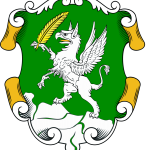
Strontium isotope data from the Danube Gorges in the north-central Balkan show Europe’s first farmers were immigrants.

“One of the big questions in European archaeology has been whether farming was brought or borrowed from the Near East,” said Dr Douglas Price of the University of Wisconsin-Madison, who co-authored a paper published in the early edition of the Proceedings of the National Academy of Sciences.
Dr Price with colleague Dr Dusan Boric of Cardiff University, the UK, measured strontium isotopes in the teeth of 153 humans from Neolithic burials (6,200 B.C.) in an area known as the Danube Gorges in modern Romania and Serbia.
Strontium is a chemical found in rocks everywhere. It enters the body through diet at or around birth and etches an indelible signature in teeth that accurately documents the geology of an individual’s birthplace.
“The evidence from the Danube Gorges shows clearly that new people came in bringing farming and replaced the earlier Mesolithic hunter-gatherers,” Dr Price said
The Danube Gorges slice through the Carpathian Mountains and in the Stone Age were a heavily forested setting, rich in fish and game, including huge sturgeon, catfish, red deer and wild boar. The bends and twists of the Danube in the Gorges region made it especially important as a source of fish, and thus potentially a desirable entryway to Europe for highly mobile and expanding Neolithic communities accompanied by their domesticates – wheat, barley, flax, goats and cattle.
“The new research speaks to the question of colonization versus adoption of transformative technologies such as farming. It is also useful because it suggests another route across the Black Sea or up the east coast of Bulgaria to the Danube for farmers moving into Europe. This contrasts with movement by sea across the Mediterranean or Aegean, which is the standard picture.”
Archaeologists have long wrestled with the question of how farming spread across Europe, ushering in a host of technologies, including the use of pottery, that ultimately led to the rise Western civilizations. Two big ideas have dominated the debate: Did the technology arrive with colonizers from Asia, notably Anatolia or modern Turkey? Or did the technology, including newly domesticated plants and animals, simply diffuse across the European landscape through networks of local foragers?
“There is some evidence for the importation of early agriculture along the shores of the Mediterranean and in Central Europe,” Dr Price said, “but elsewhere in Europe it is not clear whether it was colonists or locals adopting.”
Isotopic studies of strontium and other chemicals found in the teeth and bones of Neolithic humans, however, are now helping archaeologists better track the movement of ancient peoples across the landscape.
______
Bibliographic information: Dušan Borić and T. Douglas Price. Strontium isotopes document greater human mobility at the start of the Balkan Neolithic. PNAS, published online before print February 11, 2013; doi: 10.1073/pnas.1211474110
Source: sci-news





